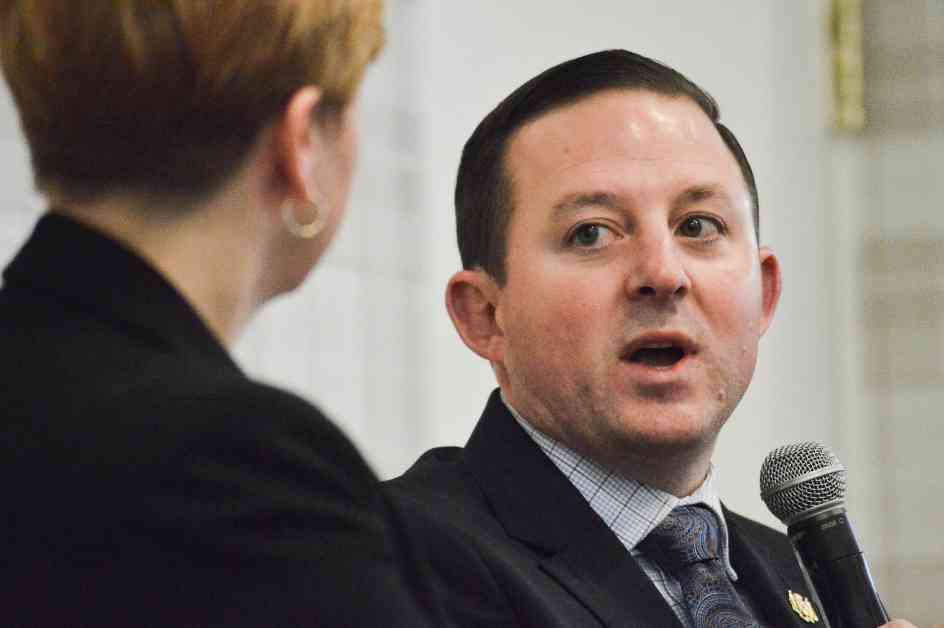Understanding Maryland’s State Budget: Addressing 4 Key Questions
State officials are gearing up for a heated debate over Maryland’s new state budget as they grapple with a staggering $3 billion deficit. Gov. Wes Moore’s proposed budget sets the stage for intense discussions as lawmakers navigate the challenging task of balancing the state’s needs against its financial constraints. Here are the pivotal questions looming large on their minds as they dive into the budget deliberations.
**Are taxes going to go up?**
The pressing issue of potential tax increases is at the forefront of the budget talks, with Maryland facing a substantial budget shortfall. While both Democratic and Republican lawmakers are keen on avoiding tax hikes, the yawning deficit demands tough decisions. The state’s financial woes, which predate the pandemic, have been exacerbated by a structural deficit, signaling a chronic mismatch between revenue and expenditure.
Renowned public finance reporter Liz Farmer underscores the urgency of addressing the deficit through sustainable revenue sources such as sales tax or income tax. One proposed solution is a “millionaire tax,” championed by Gov. Wes Moore to secure additional contributions from the state’s affluent residents. However, Republican opposition to taxing the wealthy persists, fearing an exodus of residents from Maryland.
**Are transportation projects going to happen?**
Transportation projects like the Purple Line, Red Line, and Key Bridge are pivotal components of the budget discussions. Maryland Senate President Bill Ferguson highlights the challenges posed by cost overruns from the Purple Line, emphasizing the need to complete the project despite budget constraints. Securing federal funds from the incoming Trump Administration may be crucial for sustaining these vital infrastructure projects.
Regarding the Key Bridge, Ferguson expresses optimism about the project’s funding status, affirming a positive trajectory for its completion by 2024. The fate of these transportation initiatives hinges on strategic financial planning and potential federal assistance in the face of budgetary limitations.
**Are the schools going to get more money?**
The Blueprint for Maryland’s Future, slated for funding until fiscal year 2027, remains a cornerstone of educational reform in the state. While Democrats advocate for adjustments to meet the law’s pre-K requirements, concerns linger over staffing and space constraints. House Minority Leader Jason Buckel raises apprehensions about the Blueprint’s financial implications, citing the need for substantial investments in teacher recruitment and infrastructure.
Amidst these deliberations, the challenge lies in striking a balance between educational excellence and fiscal responsibility, underscoring the intricacies of budget allocation in the education sector.
**Are people going to lose access to Medicaid?**
Proposed changes to Maryland’s Medicaid system prompt debates on ensuring equitable access to healthcare without compromising fiscal sustainability. Senate President Bill Ferguson emphasizes the need for program adjustments to enhance outcomes while safeguarding individuals’ access to essential services. Republican lawmakers advocate for refining Medicaid eligibility criteria to prevent fiscal strain on taxpayers.
Public finance expert Liz Farmer underscores the broader implications of healthcare costs on county budgets, underscoring the interconnected nature of healthcare financing. As lawmakers navigate Medicaid reforms, the challenge lies in striking a delicate balance between fiscal prudence and ensuring healthcare access for all Maryland residents.
In summary, Maryland’s state budget deliberations underscore the complex interplay between financial constraints and public service delivery, necessitating prudent decision-making to address the state’s pressing needs effectively. Balancing fiscal responsibility with the imperative to meet citizens’ essential requirements remains a paramount challenge for policymakers as they chart Maryland’s financial course.


















